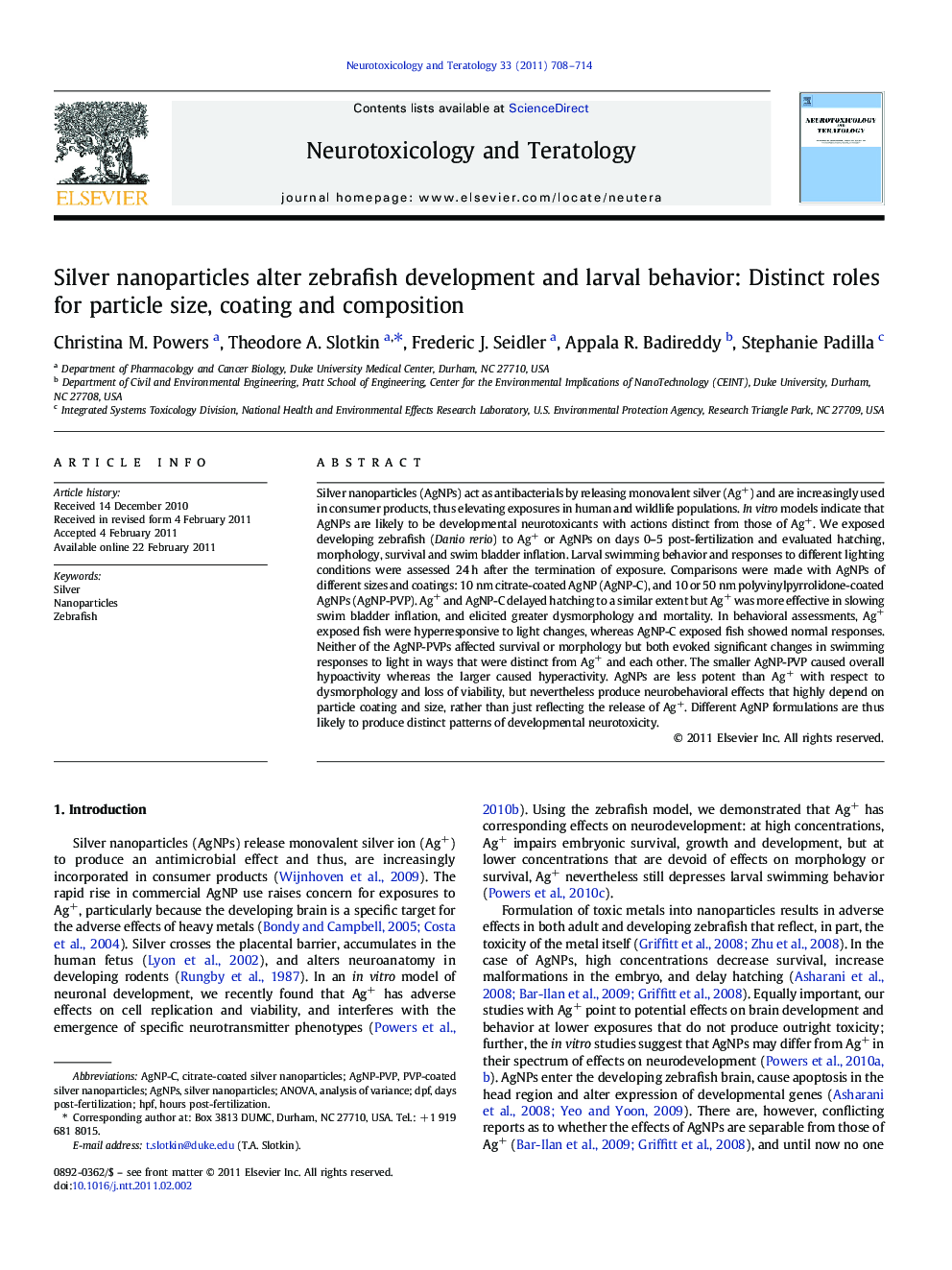| Article ID | Journal | Published Year | Pages | File Type |
|---|---|---|---|---|
| 2591608 | Neurotoxicology and Teratology | 2011 | 7 Pages |
Silver nanoparticles (AgNPs) act as antibacterials by releasing monovalent silver (Ag+) and are increasingly used in consumer products, thus elevating exposures in human and wildlife populations. In vitro models indicate that AgNPs are likely to be developmental neurotoxicants with actions distinct from those of Ag+. We exposed developing zebrafish (Danio rerio) to Ag+ or AgNPs on days 0–5 post-fertilization and evaluated hatching, morphology, survival and swim bladder inflation. Larval swimming behavior and responses to different lighting conditions were assessed 24 h after the termination of exposure. Comparisons were made with AgNPs of different sizes and coatings: 10 nm citrate-coated AgNP (AgNP-C), and 10 or 50 nm polyvinylpyrrolidone-coated AgNPs (AgNP-PVP). Ag+ and AgNP-C delayed hatching to a similar extent but Ag+ was more effective in slowing swim bladder inflation, and elicited greater dysmorphology and mortality. In behavioral assessments, Ag+ exposed fish were hyperresponsive to light changes, whereas AgNP-C exposed fish showed normal responses. Neither of the AgNP-PVPs affected survival or morphology but both evoked significant changes in swimming responses to light in ways that were distinct from Ag+ and each other. The smaller AgNP-PVP caused overall hypoactivity whereas the larger caused hyperactivity. AgNPs are less potent than Ag+ with respect to dysmorphology and loss of viability, but nevertheless produce neurobehavioral effects that highly depend on particle coating and size, rather than just reflecting the release of Ag+. Different AgNP formulations are thus likely to produce distinct patterns of developmental neurotoxicity.
